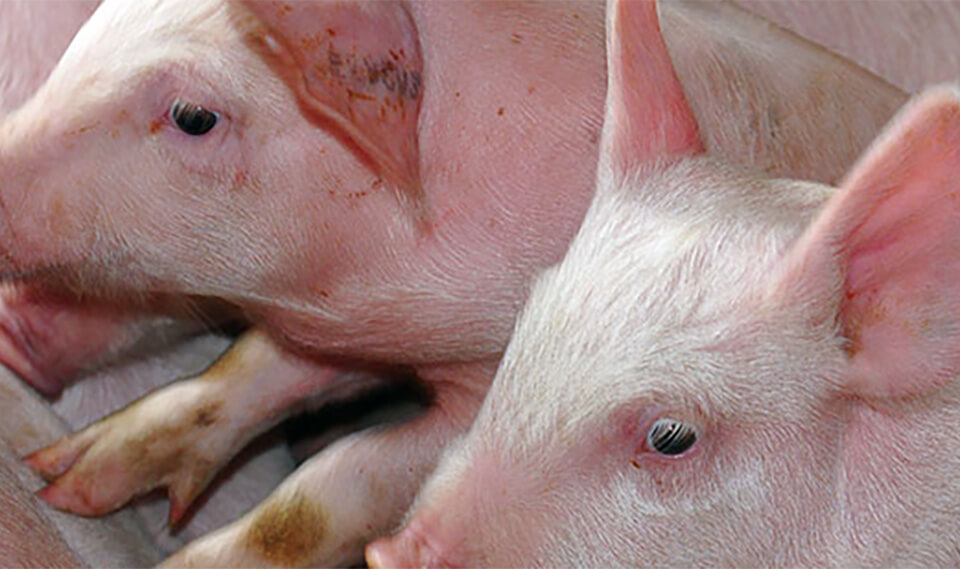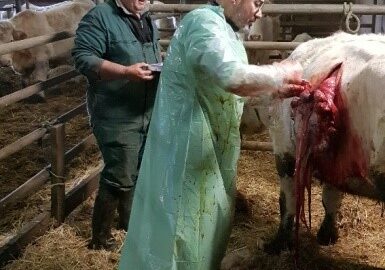Contenir, Exécuter, Soigner La Trachéotomie bovine expliquée

Auteurs
Résumé
La trachéotomie, afin d’y insérer un tube à trachéostomie, est une procédure simple, mais stressante. La clé du succès repose en la contention de l’animal (debout ou décubitus dorsal) afin de faciliter l’approche de la trachée sur la ligne médiane. Le site chirurgical se situe à la jonction du premier et du deuxième tiers du cou. Une fois la peau incisée, les muscles sternohyoïdien et sternothyroïdien sont séparés afin d’exposer la trachée. Le ligament annulaire, situé entre deux anneaux trachéaux, est ensuite incisé sur un maximum de 50% de sa circonférence. Dans certain cas, une portion des anneaux trachéaux adjacents à l’incision doit être excisée afin de faciliter l’insertion du tube. Ce dernier peut être en silicone ou en acier. Le plus gros tube pouvant être inséré est choisi. Un tube à ailette interne est une alternative au tube conventionnel. Finalement, si aucun tube n’est disponible, la trachéotomie peut être transformée en trachéostomie permanente. Suivant la procédure, des soins quotidiens sont nécessaires afin d’éviter les complications (obstruction par des sécrétions, cellulite au site chirurgicale et trachéite). Une fois l’obstruction des voies respiratoires résolue, le tube est retiré et le site guérit par seconde intention.
Abstract
The key to success lies in restrainingthe animal (standing or supine) to make it easier tohave access to the midline of the trachea. The surgical site islocated between the first and second third of the neck. Oncethe skin has been incised, the sternohyoid and sternothyroidmuscles must be separated to expose the trachea. The annularligament, located between two tracheal rings, is then incisedaround 50% of its circumference. In some cases, a portion ofthe tracheal rings adjacent to the incision must be excised to facilitate insertion of the tube. The tube may be made of silicone or steel. The largest tube that can be inserted is chosen. An internally finned tube is an alternative to the conventional tube. Finally, if no tube is available, the tracheostomy may be converted into a permanent tracheostomy. Following the procedure, daily care is necessary to avoid complications (obstruction by secretions, cellulitis at the surgical site and tracheitis). Once the airway is no longer obstructed, the tube can be removed and the site can be treated so that it heals.
D'autres articles
JNGTV 2018 Page 17
Toutes espèces · Clientèle
Projet de règlement européen médicaments. Vers plus de concurrence pour moins d’usages.
Découvrez aussi nos formations
15 décembre 2025
5 jours
Bovin laitier · Bovin viande · Bovins


